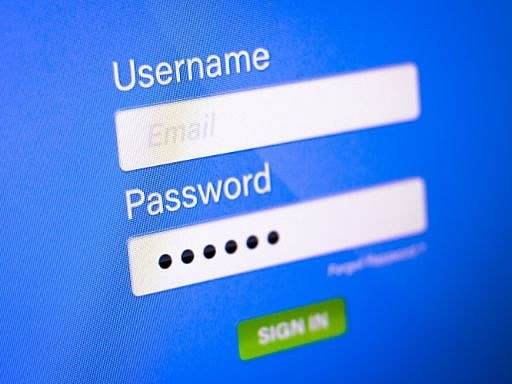Main Links

Last Updated March 13, 2023
 Mobile app security is an important issue in the digital world. It refers to the protection of data contained within mobile applications and devices. Mobile app security is essential to protect user data and privacy, as well as prevent malicious apps from gaining access to sensitive information.
Mobile app security tools and protocols are used to ensure that data is encrypted and that users can trust the applications they download and use. Mobile application security is a term used to describe the measures taken to protect the data and privacy of users when using mobile applications.
It involves the use of security measures such as encryption, authentication, and authorization to protect data and ensure its integrity. The benefits of mobile application security include enhanced user privacy, improved data security, and protection from malicious attacks.
Implementing mobile application security measures can also help organizations comply with data protection regulations and protect their reputation. With the rise of mobile app usage, it is essential for organizations to implement mobile app security measures to protect user data and the app's integrity.
Mobile app security is an important issue in the digital world. It refers to the protection of data contained within mobile applications and devices. Mobile app security is essential to protect user data and privacy, as well as prevent malicious apps from gaining access to sensitive information.
Mobile app security tools and protocols are used to ensure that data is encrypted and that users can trust the applications they download and use. Mobile application security is a term used to describe the measures taken to protect the data and privacy of users when using mobile applications.
It involves the use of security measures such as encryption, authentication, and authorization to protect data and ensure its integrity. The benefits of mobile application security include enhanced user privacy, improved data security, and protection from malicious attacks.
Implementing mobile application security measures can also help organizations comply with data protection regulations and protect their reputation. With the rise of mobile app usage, it is essential for organizations to implement mobile app security measures to protect user data and the app's integrity.
 As the use of mobile apps continues to grow, security testing is becoming increasingly important in order to ensure the safety of users and their data. Security testing helps to identify potential threats, such as malware and other malicious software and can help to prevent them from entering an app.
It is essential for developers to take the time to properly test their apps in order to protect their users and keep their data safe. Security testing is an essential part of the software development process, as it helps to ensure the security and reliability of an application.
By conducting security tests, developers can identify and address any potential security vulnerabilities in an application before they become an issue. Security testing is also important to ensure compliance with industry standards and regulations, as well as to ensure that users' data remains secure.
Security testing can also be used to detect and prevent malicious attacks, such as malware, phishing, and other malicious activities. Additionally, security testing can help to identify any weaknesses in the application's architecture and design and can help developers to correct them before the application is released.
Ultimately, security testing helps to ensure that an application is secure, reliable, and compliant with industry standards and regulations.
As the use of mobile apps continues to grow, security testing is becoming increasingly important in order to ensure the safety of users and their data. Security testing helps to identify potential threats, such as malware and other malicious software and can help to prevent them from entering an app.
It is essential for developers to take the time to properly test their apps in order to protect their users and keep their data safe. Security testing is an essential part of the software development process, as it helps to ensure the security and reliability of an application.
By conducting security tests, developers can identify and address any potential security vulnerabilities in an application before they become an issue. Security testing is also important to ensure compliance with industry standards and regulations, as well as to ensure that users' data remains secure.
Security testing can also be used to detect and prevent malicious attacks, such as malware, phishing, and other malicious activities. Additionally, security testing can help to identify any weaknesses in the application's architecture and design and can help developers to correct them before the application is released.
Ultimately, security testing helps to ensure that an application is secure, reliable, and compliant with industry standards and regulations.
 As mobile app use continues to grow, so too does the need for secure apps. Security professionals often use vulnerability scanning to detect potential security risks in apps, allowing them to identify and address any issues before they become serious.
Vulnerability scanning can help keep your mobile app secure and your data safe from malicious actors. Vulnerability scanning is an important tool for mobile app security. It is used to detect potential security vulnerabilities that could be exploited by malicious actors.
Vulnerability scanning typically involves the use of software tools to scan the mobile app code and the mobile app environment, looking for potential weaknesses or flaws. It can also search for known security vulnerabilities in the platform, operating system, and third-party components.
Vulnerability scanning can help identify potential security issues before they become serious. It helps to detect and address any issues before an attacker can exploit them.
It can also alert developers to any changes made to the mobile app code that could introduce new vulnerabilities. Developers should incorporate vulnerability scanning into their mobile app security process.
Regular scanning of mobile app code and the environment can help to identify and address any potential security risks early on. This can help to ensure the security of the mobile app and the data it contains.
As mobile app use continues to grow, so too does the need for secure apps. Security professionals often use vulnerability scanning to detect potential security risks in apps, allowing them to identify and address any issues before they become serious.
Vulnerability scanning can help keep your mobile app secure and your data safe from malicious actors. Vulnerability scanning is an important tool for mobile app security. It is used to detect potential security vulnerabilities that could be exploited by malicious actors.
Vulnerability scanning typically involves the use of software tools to scan the mobile app code and the mobile app environment, looking for potential weaknesses or flaws. It can also search for known security vulnerabilities in the platform, operating system, and third-party components.
Vulnerability scanning can help identify potential security issues before they become serious. It helps to detect and address any issues before an attacker can exploit them.
It can also alert developers to any changes made to the mobile app code that could introduce new vulnerabilities. Developers should incorporate vulnerability scanning into their mobile app security process.
Regular scanning of mobile app code and the environment can help to identify and address any potential security risks early on. This can help to ensure the security of the mobile app and the data it contains.
 Data security is a growing concern in the mobile app market, and stolen login credentials are a major contributor. With hackers becoming savvier, it's important that app developers take the necessary steps to ensure their users' logins are safe and secure.
It's also important to educate users on the importance of keeping their passwords safe and secure. Stolen login credentials can have devastating effects on both businesses and users.
Hackers can use stolen credentials to gain access to sensitive data, commit fraud, or even blackmail victims. To protect users from stolen login credentials, app developers should take the following steps:
1. Implement strong authentication methods. Strong authentication methods, such as two-factor authentication, help to ensure that only the user has access to their account. This makes it much harder for hackers to gain access.
2. Use secure passwords. Encourage users to use strong passwords that are not easily guessed. Instruct them to use a combination of letters, numbers, and symbols. Also, remind them to change their passwords regularly.
3. Monitor user accounts. Regularly monitor user accounts for suspicious activity. If any suspicious activity is detected, it should be addressed immediately.
4. Educate users. It’s important to educate users on the importance of keeping their accounts safe and secure. Let them know the risks of using weak passwords and remind them to never share their passwords with anyone.
By taking these steps, app developers can help protect their users from stolen login credentials. This will not only protect their users, but it can also help maintain the reputation of their business.
Data security is a growing concern in the mobile app market, and stolen login credentials are a major contributor. With hackers becoming savvier, it's important that app developers take the necessary steps to ensure their users' logins are safe and secure.
It's also important to educate users on the importance of keeping their passwords safe and secure. Stolen login credentials can have devastating effects on both businesses and users.
Hackers can use stolen credentials to gain access to sensitive data, commit fraud, or even blackmail victims. To protect users from stolen login credentials, app developers should take the following steps:
1. Implement strong authentication methods. Strong authentication methods, such as two-factor authentication, help to ensure that only the user has access to their account. This makes it much harder for hackers to gain access.
2. Use secure passwords. Encourage users to use strong passwords that are not easily guessed. Instruct them to use a combination of letters, numbers, and symbols. Also, remind them to change their passwords regularly.
3. Monitor user accounts. Regularly monitor user accounts for suspicious activity. If any suspicious activity is detected, it should be addressed immediately.
4. Educate users. It’s important to educate users on the importance of keeping their accounts safe and secure. Let them know the risks of using weak passwords and remind them to never share their passwords with anyone.
By taking these steps, app developers can help protect their users from stolen login credentials. This will not only protect their users, but it can also help maintain the reputation of their business.
 As mobile apps continue to become more and more popular, it's important to make sure they are secure. Implementing security measures for the storage and transmission of data is the best way to ensure that your mobile app is safe and secure.
This includes encrypting data, using two-factor authentication, and securing your network. With these measures in place, you can rest assured that your app and its users are safe.
1. Encryption: Encrypting data is a key part of keeping it secure. Encryption scrambles data so that it is unreadable to anyone who does not have the key to decrypt it. This key can be stored on the device, or it can be stored securely in the cloud. When used in combination with two-factor authentication, encryption can provide an extra layer of security for data storage and transmission.
2. Two-Factor Authentication: Two-factor authentication is a system that requires two separate pieces of information in order to authenticate a user. Examples of two-factor authentication include a code sent to a user's phone or an email sent to a user's email account. When used in conjunction with encryption, two-factor authentication can help to ensure that only authorized users have access to your data.
3. Securing Your Network: Securing your network is an essential part of keeping your data safe. This can include using a VPN, setting up firewalls, and using secure protocols. By taking the time to secure your network, you can rest assured that your data is safe from unauthorized access.
4. Data Backup: Backing up your data is another important security measure for data storage and transmission. This can include making regular backups of your data, as well as storing backups in a secure location. Additionally, if you are storing sensitive data, you may also want to consider using a secure cloud storage service. By regularly backing up your data, you can ensure that you have access to it in case of an emergency.
5. Monitoring: Monitoring your data is an important part of keeping it secure. This can include regularly checking your system logs for suspicious activity, as well as monitoring your network traffic. By staying vigilant, you can ensure that your data is safe from unauthorized access.
By taking the time to implement these security measures for data storage and transmission, you can ensure that your mobile app is safe and secure. By taking the time to secure your data, you can rest assured that it is safe from unauthorized access.
As mobile apps continue to become more and more popular, it's important to make sure they are secure. Implementing security measures for the storage and transmission of data is the best way to ensure that your mobile app is safe and secure.
This includes encrypting data, using two-factor authentication, and securing your network. With these measures in place, you can rest assured that your app and its users are safe.
1. Encryption: Encrypting data is a key part of keeping it secure. Encryption scrambles data so that it is unreadable to anyone who does not have the key to decrypt it. This key can be stored on the device, or it can be stored securely in the cloud. When used in combination with two-factor authentication, encryption can provide an extra layer of security for data storage and transmission.
2. Two-Factor Authentication: Two-factor authentication is a system that requires two separate pieces of information in order to authenticate a user. Examples of two-factor authentication include a code sent to a user's phone or an email sent to a user's email account. When used in conjunction with encryption, two-factor authentication can help to ensure that only authorized users have access to your data.
3. Securing Your Network: Securing your network is an essential part of keeping your data safe. This can include using a VPN, setting up firewalls, and using secure protocols. By taking the time to secure your network, you can rest assured that your data is safe from unauthorized access.
4. Data Backup: Backing up your data is another important security measure for data storage and transmission. This can include making regular backups of your data, as well as storing backups in a secure location. Additionally, if you are storing sensitive data, you may also want to consider using a secure cloud storage service. By regularly backing up your data, you can ensure that you have access to it in case of an emergency.
5. Monitoring: Monitoring your data is an important part of keeping it secure. This can include regularly checking your system logs for suspicious activity, as well as monitoring your network traffic. By staying vigilant, you can ensure that your data is safe from unauthorized access.
By taking the time to implement these security measures for data storage and transmission, you can ensure that your mobile app is safe and secure. By taking the time to secure your data, you can rest assured that it is safe from unauthorized access.